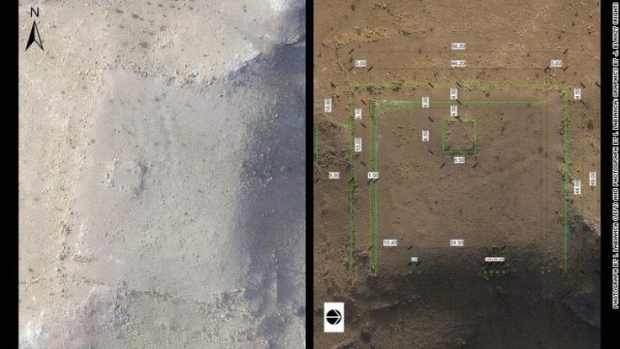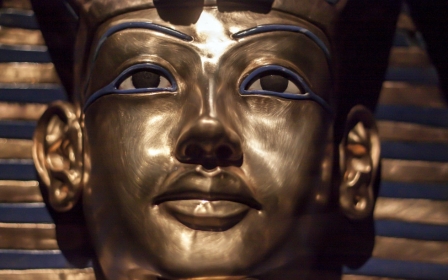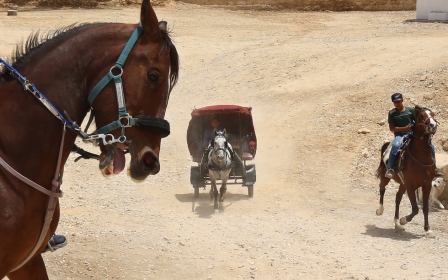Drones reveal Olympic pool-sized ancient monument at Jordan's Petra

Satellite and drone images have allowed archaeologists to locate an enormous ancient monument that has been hiding in plain sight at the World Heritage Site of Petra.
Located in modern Jordan, and once an important crossroads between Arabia and Egypt, the Nabataean caravan city is half-built, half-carved into the rock and is one of the world's most famous archaeological sites, where eastern traditions meet Hellenistic architecture.
The site at Petra, which featured in the film Indiana Jones and the Last Crusade, is surrounded by mountains riddled with passages and gorges and is among the most explored heritage sites in the world.
The ancient city centre was first extensively surveyed by explorer Johann Burckhardt in 1812, but the latest discovery of a monument as long as an Olympic-size swimming pool just 800m from the centre of the ancient city has proved discoveries continue to be made in its hinterlands.
The newly discovered monument is a 56m-by-49m platform which is thought to enclose a slightly smaller platform originally paved with flagstones and is partially lined by pillars that once crowned a vast staircase.
There are no similar structures in Petra and it most likely served a public or ceremonial function, according to archaeologists Sarah Parcak, a National Geographic fellow, and Christopher Tuttle, executive director of the Council of American Overseas Research Centers.
The researchers used drone photography and high-resolution satellite footage as well as traditional ground surveys to locate the structure, which has not been excavated.
The satellite and drone imagery allowed the pair to identify the faint footprints of ancient buildings and attempt to understand how they relate to other sites across Petra.
Their work has been revealed in a study published this week in the journal The Bulletin of the American Schools of Oriental Research, which described the finding as “hiding in plain sight”.
Petra served as the capital of the Nabataeans tribe in the 2nd century BC, but was abandoned at the end of the Byzantine period six centuries later. Surface pottery at the new find suggests the platform was built in the mid-second century BC, when Petra was at its peak.
Today hundreds of thousands of tourists a year come to visit the site’s ancient monuments, which include its treasury which is featured in the final scenes of the Hollywood movie.
The Nabataeans, before they were conquered and absorbed into the Roman Empire, controlled a vast tract of the Middle East from modern-day Israel and Jordan into the northern Arabian peninsula. The remains of their innovative networks of water capture, storage, transport, and irrigation systems are found to this day throughout this area.
New MEE newsletter: Jerusalem Dispatch
Sign up to get the latest insights and analysis on Israel-Palestine, alongside Turkey Unpacked and other MEE newsletters
Middle East Eye delivers independent and unrivalled coverage and analysis of the Middle East, North Africa and beyond. To learn more about republishing this content and the associated fees, please fill out this form. More about MEE can be found here.





